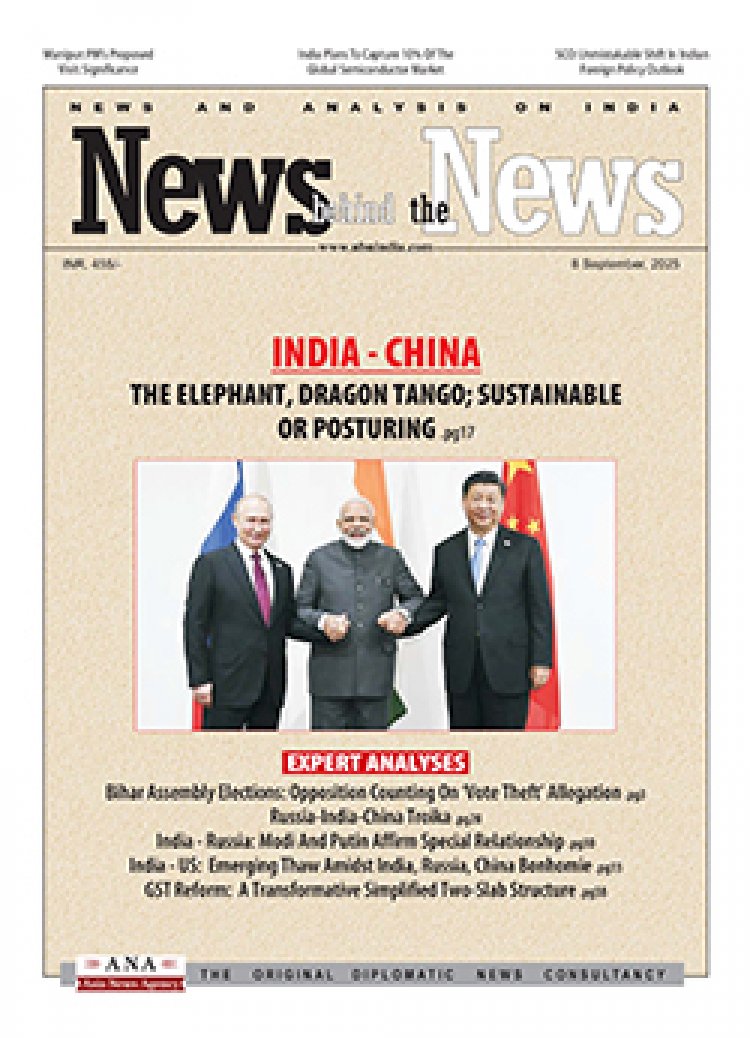Delimitation: Polarised Political Environment
Asia News Agency

The proximity to the Census, expected to begin in 2026, has raised concerns over delimitation. The redrawing of Lok Sabha constituencies to achieve a better ratio of elected MPs to the number of people they represent, in the view of The Asian Age “will not come without heartaches. The fact that so many states are concerned this time is illustrative of not only the polarised political environment but also the reality of drastic changes that can come about from delimitation.”
Concerns of the South
That the South is “rising in unison now at the prospect of delimitation, last done in 1973 based on the 1971 Census when the seats were raised to the current 543 from 522 (based on 1961 Census), “is indicative of how much can change after Census counts taken as far apart as 54 years in the world’s most populous nation.
“Assuming population stays as the sole criterion and proportional representation in number of MPs is fixed by the 2026 Census, southern states as well as Bengal, Odisha, Punjab and smaller norther and northeastern states face a scary scenario in which their political presence will relatively dwindle in Parliament as opposed to the more populous states like UP, Bihar, MP, Rajasthan which stand to gain a number of seats in an expanded Lok Sabha.”
A projection based on an assumed population of 140 crores or more in 2026 has it that while Tamil Nadu may gain three or four seats from its current 39, Uttar Pradesh may be electing as many as 140 MPs, substantially up from its current 80 and Bihar about 80 as compared to 40. Such calculations, according to The Asian Age “will be true of most of the Hindi-Hindu-Hindutva belt which, as is known, may prove beneficial only to the right leaning nationalist parties and their bigger rivals who will take a share of additional seats in a House of say 800 MPs.”
There is thus, a need to have a consensual approach. A confrontational approach “will build up if the less populated southern states, which contribute 33 per cent to national GDP, are denied a fair hearing on what is a major reform….”
A delimitation exercise has the mandate of the Constitution, but the larger question is whether representation by population should continue to be the only criterion.
Joint Action Com¬mittee for fair delimitation
The chief minister of Tamil Nadu, M.K. Stalin, from the Dravida Munnetra Kazha¬gam (DMK), had earlier chaired the Joint Action Com¬mittee for fair delimitation attended by leaders of diverse political stripes. In attendance were the Congress’s A. Revanth Reddy from Telangana and D.K. Shivakumar from Karnataka, Pinarayi Vijayan of the Com¬munist Party of India (Marxist) from Kerala, Bhagwant Mann of the Aam Aadmi Party from Punjab as well as key figures from six states. Among these was Naveen Patnaik of the Biju Janata Dal from Odisha, traditionally a fence-sitter on most issues of national importance.
Tamil Nadu Chief Minster Stalin, who convened this meeting, had not invited parties of the Opposition INDIA bloc from the northern belt.
BJP would have gained 14 extra seats in 2019 and six extra seats in 2024
The anxiety about delimitation is not only about the potential reduction of political power for peninsular States to the benefit of heartland ones. An inter-State delimitation of Lok Sabha constituencies can potentially also result in a shift of power from non-BJP parties to the BJP.
An analysis suggests that with the same vote share, the BJP would have gained 14 extra seats in 2019 and six extra seats in 2024 if Lok Sabha constituencies had been delimited across State boundaries according to the 2011 Census.
















